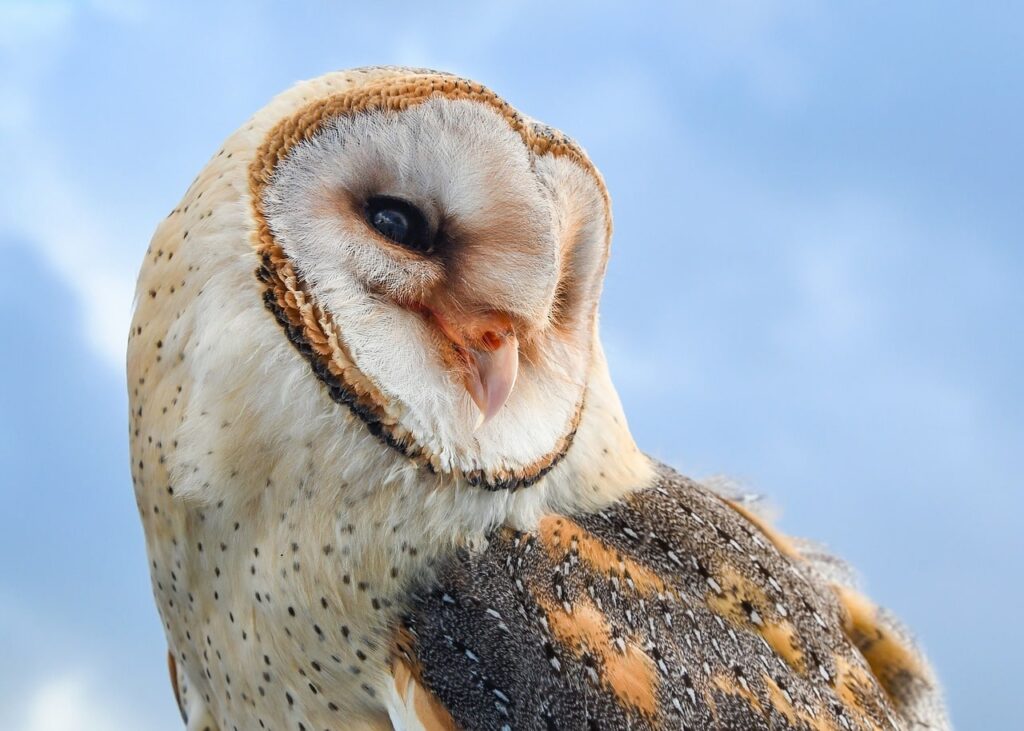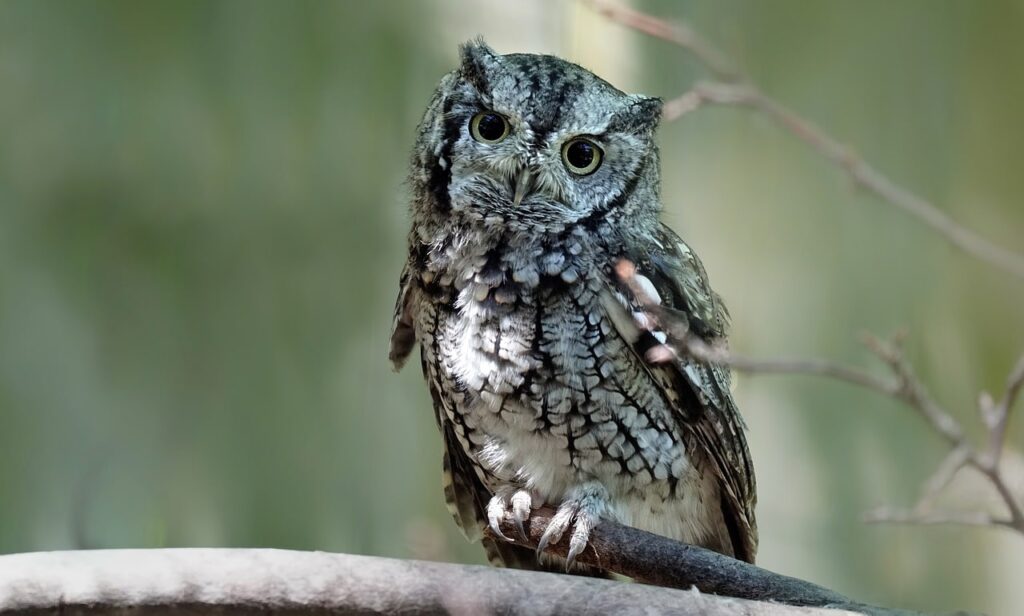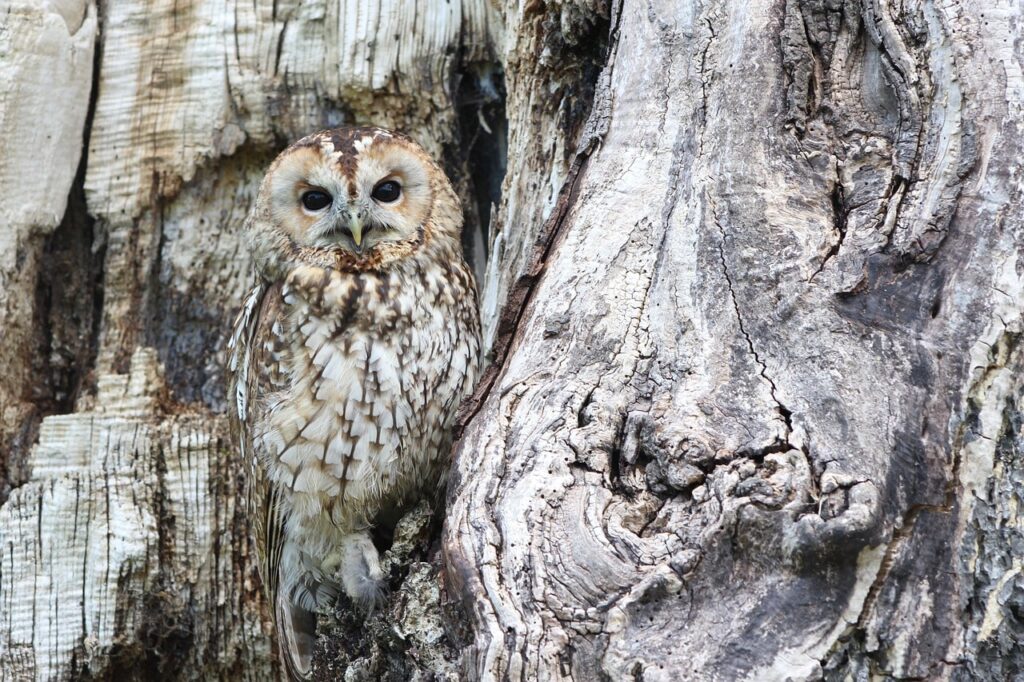Night’s Silent Guardians: Owl Facts
Owls, those mysterious creatures of the night, hold a unique place in the avian kingdom. From their silent flight to their captivating hoots, there’s something enchanting about these nocturnal hunters. Here we will discuss 10 Owl facts that will leave you in awe.
Different Species Of Owls:
There are over 200 species of owls worldwide, each with its own unique characteristics and habitats. A few are given:
- Barn Owl (Tyto alba)
- Great Horned Owl (Bubo virginianus)
- Snowy Owl (Bubo scandiacus)
- Barred Owl (Strix varia)
- Eastern Screech Owl (Megascops asio)
- Northern Saw-whet Owl (Aegolius acadicus)
- Long-eared Owl (Asio otus)
- Elf Owl (Micrathene whitneyi)
- Spotted Owl (Strix occidentalis)
- Eurasian Eagle Owl (Bubo bubo)

Owl: Masters of the Night Sky
Astonishing Facts About Owl:
Following are some astonishing facts about owls that are adaptable to different environments because of their fascinating features and art of hunting that will leave you in awe:
1. Owl Facts: Silent Predators
Owls are often regarded as silent predators due to their remarkable ability to hunt in near silence. This unique trait is attributed to several adaptations in their anatomy and behavior. Owls possess specialized feathers that help minimize sound during flight and the overall texture of an owl’s plumage is soft and velvety. They have large wings relative to their body size that allow them to fly slowly and hover. The facial disk, a distinctive feature of owls, plays a role in focusing sound. Furthermore they have asymmetrically placed ears on their skulls, meaning one ear is slightly higher than the other which allows them to pinpoint the direction of sounds accurately.
2. Facts About Sharp Vision of Owl
Owls are known for their extraordinary vision, which is adjusted to their nighttime way of life. Moreover their large eyes are equipped with a high number of rod cells that allow them to see in minimal light not only-but also ensuring that they don’t miss a single movement in the darkness. Owls can turn their heads up to 270 degrees, providing them with a broad field of view without moving their bodies. This adaptability assists them with examining their environmental elements for likely prey or dangers.
3. Adaptable Diet: Owls Are Culinary Connoisseurs
Owls, known for their nocturnal presence and silent flight, are not just masters of the skies but also culinary connoisseurs with an adaptable diet. Owls don’t just stick to rodents. While they do have a penchant for small mammals, owls are remarkably adaptable in their diet, feasting on anything from insects and fish to other birds. This key feature of owl diet is responsible for their ability to adjust based on the availability of prey in their habitats. Unlike some other birds of prey with specific dietary preferences, owls are opportunistic hunters, making them adaptable to a wide range of food sources. Their culinary repertoire includes mammals, birds, insects, and even fish, allowing them to maintain a balanced diet in diverse environments.
4. Facts About The Myth of Owl Wisdom
The association between owls and wisdom is deeply ingrained in various cultures. The association of owls with wisdom has been a longstanding myth, deeply rooted in folklore and popular culture. Contrary to the widespread belief that owls are symbols of unparalleled intelligence, the reality is more nuanced. Owls may symbolize mystery and intuition, it’s crucial to acknowledge that wisdom is a human construct. Owls, like other creatures, operate on instinct and survival strategies rather than possessing a mystical wisdom. Appreciating these birds for their unique adaptations and ecological roles offers a more accurate perspective, dispelling the myth of owl wisdom and highlighting the fascinating realities of the natural world.

Facts About Owl Wisdom
5. Diverse Species: Owls Around the Globe
Owls are a global phenomenon, with over 200 species inhabiting diverse ecosystems. They found on nearly every continent, are a diverse group of birds with a rich array of species showcasing unique adaptations. From dense forests to open deserts, these nocturnal hunters have successfully adapted to a variety of environments, making them one of the most widespread bird families. In North America, the Great Horned Owl reigns as a powerful predator, while the Snowy Owl, with its striking white plumage, is perfectly adapted to the Arctic tundra. Europe boasts the iconic Barn Owl, recognized for its heart-shaped facial disc, and the Eurasian Eagle Owl, one of the world’s largest owl species. The adaptability and diverse hunting techniques displayed by these birds contribute to their success in a wide range of ecosystems.
6. Camouflage Kings: Owl Facts
Owls, the nocturnal hunters of the avian world, are masters of camouflage, seamlessly blending into their surroundings with astonishing precision. This unique ability serves as a crucial adaptation for both stalking prey and avoiding potential predators. One remarkable feature aiding their camouflage is the intricate patterning and coloration of owl feathers. Many owl species boast a mix of earthy tones—browns, grays, and blacks—that mimic the bark, leaves, and shadows of their natural habitats. This color palette, combined with feather patterns resembling tree bark or foliage, allows owls to virtually disappear into the background, making them nearly invisible to unsuspecting prey.
7. Fact: Owl Calls and Hoots
Owls communicate through an array of distinctive hoots and calls which is an important fact about owl. Each species has its unique vocalizations, serving purposes from marking territory to attracting mates. The haunting beauty of their nighttime symphony is a testament to the sophistication of their communication. Owl calls are characterized by their haunting and melodious nature, echoing through the stillness of the night. These calls play a crucial role in establishing and maintaining territory, signaling both presence and dominance to other owls in the vicinity.

Calls and Hoots of Owl
8. Facts about Nesting Nooks of Owls
Owls are meticulous architects when it comes to their nests. Whether in tree hollows, abandoned burrows, or even on the ground, these birds create cozy homes for their offspring. The choice of nesting sites varies among species, showcasing their adaptability. Owls typically use materials available in their surroundings for nest construction. Leaves, feathers, and debris are commonly used. Many owl species, such as the barn owl, make use of tree hollows as natural nesting sites. Some owls, particularly ground-nesting species like the burrowing owl, create shallow depressions called scrape nests.
9. Facts about Owl: Life Span Wonders
In the wild, owls boast impressive lifespans. Depending on the species, some can live well into their twenties, defying the conventional lifespan of many other bird species. Several factors contribute to the extended life spans of owls. in fact their meticulous hunting skills, combined with a nocturnal lifestyle and exceptional adaptations, help minimize risks in their environment. Owls’ ability to adapt to diverse ecosystems and exploit various food sources further contributes to their longevity, allowing them to weather changing conditions over the years.
10. Truth About The Battle for Owl Habitats
Despite their adaptability, owls face challenges in the modern world. Loss of habitat, pesticide use, and urbanization pose threats to these majestic birds. Conservation efforts are crucial to ensuring the survival of these enigmatic creatures for future generations.



